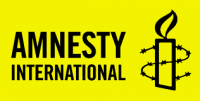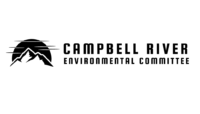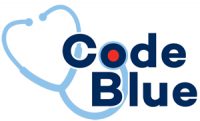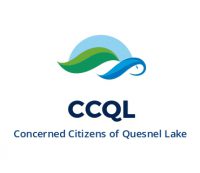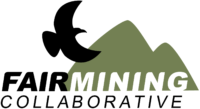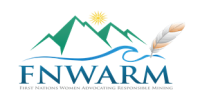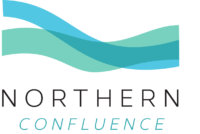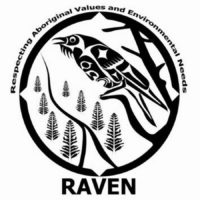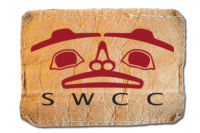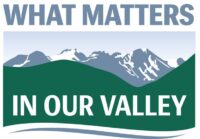Reports
- Expert Analysis: The Risk of Tailings Dam Failure in British Columbia: An Analysis of the British Columbia Existing and Future Tailings Storage Database by Dr. Steven Emerman
- Primer on the Expert Analysis
FAQs
1. What is the purpose of the British Columbia Mine Tailings Map?
The map is designed to provide local communities, First Nations, and other users with information about the location of, and risks associated with, tailings across the province of British Columbia.
2. Who created the map?
The British Columbia Mine Tailings Map was commissioned by the BC Mining Law Reform network and SkeenaWild Conservation Trust, and is built from a database of tailings-related information compiled by the two organizations.
3. Why does this map feature tailings? Are tailings storage facilities inherently dangerous to communities and the environment?
Tailings are a form of mine waste leftover after the commodity of value has been extracted. Typically, tailings are stored permanently aboveground in a tailings storage facility (TSF), which are most often constructed using dams. TSFs pose a risk of catastrophic failure that can kill people and cause extensive environmental, cultural, and economic damage. (The 2014 Mount Polley mine tailings dam failure offers a recent example of how destructive tailings dam failures can be.)
These risks are significant and long-term, given that TSFs are often expected to remain on the landscape “in perpetuity” (i.e., forever.) Yet, information about the risk factors at TSFs in B.C. is hard to find. The British Columbia Mine Tailings Map compiles critical information about tailings in B.C. into one place, to help B.C. residents understand the risks in their region.
4. What do points on the map represent?
Every point on the map identifies a mine site in B.C. containing at least one tailings storage facility (TSF). All sites in B.C. with existing and not yet fully reclaimed TSFs are shown at mines that are Operating, Closed, or under Care and Maintenance. All currently Proposed mine sites that will contain TSFs if built are also shown.
The map does not include sites where no TSF is present, or where TSFs have been remediated to eliminate failure potential. (Information on a wider range of contaminating and potentially contaminating mine sites can be found on the Maps of B.C. Contaminated Mine Sites.)
5. What information is provided about each site on the map? How does this information help to understand the risk of tailings in B.C.?
For each site on the map, details on the following key risk indicators are provided:
- Operational status (Closed, Care and Maintenance, Operating, or Proposed). Sites that are Closed and under Care and Maintenance may not receive adequate oversight to prevent tailings dam failures. Proposed sites show the emerging tailings landscape in B.C., and the risks associated with it.
- Number of tailings dams. Every tailings dam on a site carries its own risk of failure, so more dams conveys increased risk.
- Tallest tailings dam height. Taller tailings dams tend to have greater failure consequences and, in some circumstances, have increased probability of failure. (The failed Mount Polley dam was only ~40 m tall.)
- Highest dam failure consequence rating assigned to any tailings dam on site. Dam failure consequence ratings are assigned on the basis of potential loss of life and potential environmental, cultural, and economic impacts in the event of a failure.
- Upstream dam present indicates whether upstream dam construction has been used to build any tailings dam on site. Upstream dams are progressively raised on top of existing tailings in the facility. These dams are riskier because they have a higher rate of stability issues compared to other types of tailings dams.
- Current tailings storage volume. If there are multiple tailings storage facilities (TSFs) on site, this is the total tailings volume stored across all of them. Larger stored volumes of tailings tend to result in greater failure consequences.
- Design storage capacity for the largest (greatest volume) TSF. This is the tailings volume the largest facility on site will hold once built to its fully permitted size. This is an indication of the future risk this site will present.
6. What are B.C.’s tailings dam failure consequence categories?
B.C.’s Dam Safety Regulations, based on Canadian Dam Association Guidelines, identify five dam failure consequence ratings. These ratings are Low, Significant, High, Very High, and Extreme. They are assigned to tailings dams based on potential consequences in the event of failure, according to three categories:
- Loss of human life.
- Short- and long-term loss or deterioration of:
- Fisheries habitat or wildlife habitat;
- Rare or endangered species;
- Unique landscapes; or
- Sites having significant cultural value.
- Economic losses, including losses affecting infrastructure, public transportation or services, commercial facilities, and residential areas.
Consequence ratings range from no loss of life and minimal, reversible environmental/cultural and economic losses (Low) to more than 100 potential fatalities and major, irreparable environmental/cultural losses, and extremely high economic losses (Extreme). (See B.C.’s Downstream Consequence of Failure Classification Interpretation Guideline for details on how ratings are assigned.)
7. Does the map show which watersheds might be at risk from a tailings facility failure?
The map shows minor watersheds (i.e., third-order watersheds) and principal drainages (i.e., highest-order watersheds), which are at potential risk from tailings dam failures at any of the mine sites within their boundaries. Minor watershed and principal drainage boundaries can be displayed by turning on the Watersheds and Drainage Regions layers, respectively. Additionally, when a specific mine site is clicked on, the map automatically highlights the minor watershed at risk.
8. Does the map show which B.C. First Nations and other communities might be at risk from a tailings facility failure?
There are nearly 200 distinct First Nations in B.C. and many, if not all, of the sites on the map are in First Nation traditional territory. A map layer that fully reflects the traditional territories of all B.C. First Nations was unavailable for initial map publication; however, one will be added in the future if it becomes available.
To locate nearby settlements, use the map function to zoom in and around the mine sites. Settlements within the same minor watershed or principal drainage boundary (displayed by turning on the Watersheds or Drainage Regions layers, respectively) as a mine site could be at risk in the event of a tailings failure at that site.
9. Does the map show where salmon are at risk from tailings?
Turning on the Salmon Habitat layer displays which minor watersheds provide salmon habitat, and specifies whether they provide core or peripheral habitat. Selecting a particular watershed when this layer is on identifies the presence of Sockeye Salmon, Pink Salmon, Coho Salmon, Chum Salmon and/or Chinook Salmon. These habitats and species are at potential risk from tailings dam failures at any of the sites within their boundaries.
10. What are the potential effects on salmon and other aquatic life if tailings facilities fail?
Tailings dam failures can release large volumes of tailings and water into local waterways. This can cause direct physical effects such as destruction of habitat from the flood wave, increased turbidity (which can inhibit photosynthesis in plants and algae), and increased sedimentation (which can suffocate fish and smother spawning habitat).
Additionally, tailings contain heavy metals and other contaminants, like selenium, which can cause lethal and sublethal toxicity to fish and other aquatic life. In fish, these contaminants decrease growth, disrupt essential organ function, impair reproductive function, and can be directly lethal, especially to eggs and juveniles. In salmon, even low levels of copper impair their sense of smell, thus affecting their ability to navigate and find their natal stream to spawn in. Tailings spills can affect all levels of the aquatic food chain, such as sediment, plants, and invertebrates, which may impact fish via bioaccumulation or by reducing their prey populations.
Aquatic effects of tailings dam failures can be long-lasting. Scientific studies released in 2020 and 2022 demonstrate the 2014 Mount Polley disaster has resulted in ongoing elevated metals concentrations in sediment and aquatic invertebrates.
11. What sources of information were used to create the map?
The British Columbia Mine Tailings Map is built from a database of tailings-related information compiled by SkeenaWild Conservation Trust and BC Mining Law Reform. Primary sources for the database are of the following types: a) B.C.’s public-facing mining inventories, databases, and project information sites, b) independent expert reports commissioned by the Province of B.C., and c) mine company disclosures.
When necessary, additional documents are procured via public sources to assist with populating the map data. These types of sources include: B.C. government reports (e.g., Chief Inspector of Mines Annual Reports); mine engineering reports; mine company and/or government presentations; mine company press releases, memos, and/or NI 43-101 technical reports; and United Nations reports. Lastly, direct communication with the B.C. Ministry of Energy, Mines, and Low Carbon Innovation, and an independent expert analysis regarding tailings dam construction methods have been performed to address missing or unclear information.
Please consult the Data Sources document for links and detailed descriptions of each primary source.
12. How accurate and up-to-date is the map?
Research to create the first iteration of the database on which this map is based was conducted from May 24, 2021 to June 4, 2022. The list of sites for inclusion was finalized on February 28, 2022, and the following months were spent performing quality control and fact-checking site-specific information. In cases where conflicting data were encountered across the different primary sources, the clearest and most recently published information was privileged.
13. Will the database be updated on an ongoing basis?
SkeenaWild and BC Mining Law Reform hope to keep the database updated regularly. Please consult the Research Methodology document for the date of the last update.
14. Who conducted analysis of the data presented on the map?
An independent expert analysis of the database on which the map is based was conducted by Steven Emerman, Ph.D. (Malach Consulting). Dr. Emerman is an internationally recognized mining expert, who has evaluated tailings management strategies around the world. Dr. Emerman’s full report can be found here. A summary of his key findings can be found here.
15. What does the B.C. government need to do to ensure the safety of tailings dams and reduce the risk to communities and the environment?
Key recommendations include:
- Commit to a plan to reclaim or otherwise seek safe closure of tailings storage facilities in B.C. – This includes developing a strategy to reduce B.C.’s active tailings storage facilities (TSFs) by half, as recommended by the Mount Polley Independent Engineering Investigation Review Panel.
- Clarify treatment of tailings storage facilities in ‘care and maintenance’ and provide clear guidance for management of facilities in this status – By clearly defining the stages of mine life where a ‘care and maintenance’ status is permitted, long delays to closure and reclamation of tailings facilities could be avoided, thereby ensuring all credible failure modes are eliminated at TSFs that are no longer operational, so they can be removed from B.C.’s inventory.
- Align with international best practices and implement a ban on risky upstream tailings dam construction methods – Globally, there is a trend away from upstream tailings dam construction, and they are already banned in some other jurisdictions.
- Reverse the trend of more severe consequence ratings at new tailings storage facilities – B.C.’s TSFs are increasingly being designed with failure consequences in the High, Very High, and Extreme categories. Reducing the consequences of failure at all new tailings facilities or, alternatively, denying permitting for those that cannot be more safely designed and/or located, puts safety as a top priority.
- Factor in seismic and climate change risks at all tailings facilities, especially when evaluating proposed mines – B.C. should update its guidelines to require that all tailings dams be built to withstand the most extreme flooding and earthquake events, and that future climate risks be factored into TSF environmental assessment and regulatory oversight.
- Pursue strategies to reduce the volume of tailings, especially at new mines – The total volume of tailings on the provincial landscape is growing fast. To reduce tailings volumes, B.C. should investigate and then implement technologies and more stringent policies and requirements for dewatered tailings.
- Improve accessibility and transparency of information on risk factors for all tailings facilities – Most of the risk factors identified by the map (e.g., storage volume, dam heights) are not required by B.C. to be publicly reported in a consistent manner. This incomplete record points to the need for more transparency and disclosure in relation to all sites.
Further discussion of these recommendations can be found here.
16. Who should I contact with questions or comments about the map?
If you would like a more detailed breakdown of how information was sourced for the map, believe you have identified an error, or have any other enquiries regarding the map, please reach out to tailings@reformbcmining.ca.

